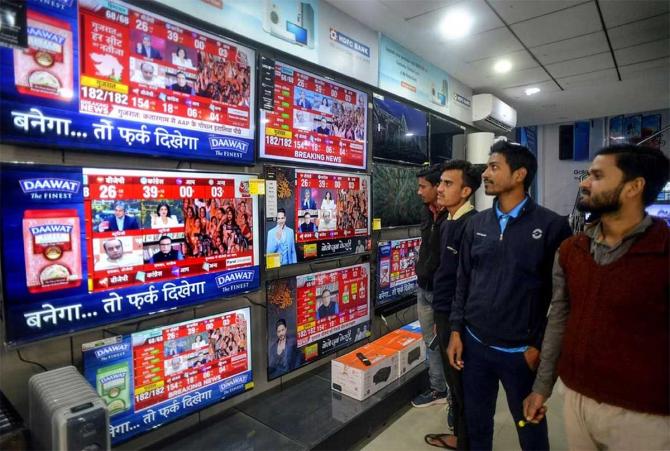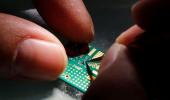The reason? Price of open cell panels has gone up 15%.
One of the main components in the manufacturing of TV sets, open cells contribute to 60%-65% of the manufacturing cost.

Television manufacturers have started to hike prices as open-cell prices get costlier. Laptops and smartphones may see price increases as well.
The price of open cell panels has gone up 15 per cent on average and is even higher for big-screen TVs, according to manufacturers.
One of the main components in the manufacturing of TV sets, open cells contribute to 60-65 per cent of the manufacturing cost.
While open cells are used in the manufacturing of mobile phones, their contribution is relatively lower when weighed up against TVs. Also, premium phones have huge margins due to which the price increase is typically absorbed by the brand.
"Last year, prices of open cells were depressed. Prices have been on the rise since the start of this calendar year. Since January, prices have gone up 15-17 per cent," says Atul Lall, managing director, Dixon Technologies (India).
For 32-inch TVs, the price of an open cell had dropped to about $27 per panel last year. Since the company is into contract manufacturing, it passes on the entire price increase to its client.
Lall explains that there has been a consolidation between four to five panel manufacturers in China, causing prices to spiral. Super Plastronics, which is a Kodak brand licensee, is also hiking the prices of its TV sets by 10 per cent from June.
"There has been a continuous price increase in the prices of panels. We have witnessed more than 25-30 per cent rise. Additionally, there is a shortage in supply. As a result, we are increasing TV prices of our brands by 10 per cent in June," says Avneet Singh Marwah, director and CEO, Super Plastronics.
while the average price hike of open cells is somewhere in the range of 15 per cent, Marwah says the company sees more volumes in screen sizes from 43-inches onwards. Hence, the price increase it is witnessing is higher.
"The TV industry will face this kind of sudden price rise frequently as panel dependence is on one particular country and all other alternative sources have stopped operations," says Marwah. He expects TV prices to continue to go up until the festival season as open-cell prices could continue to rise.
However, price increases are yet to hit consumers as retailers are sitting on an inventory of 30-60 days.
"While panel (open cell) prices have started to go up, we are yet to see an increase in TV prices on the ground. Higher prices will start to reflect in the next month or two," says Nilesh Gupta, MD, Vijay Sales.
"Brands may pass on some of the costs incurred (due to rising component prices) to consumers by increasing the prices of products shortly. However, the impact will not be as significant as last year's," says Anshika Jain, senior research analyst, Counterpoint Research -- a technology market research firm.
Further, price hikes are expected to be offset by a reduction in Customs duty for smartphone and TV components.
In Budget 2023-24, the Centre halved the basic Customs duty on specified parts of open cells of TV panels to 2.5 per cent, down from an earlier 5 per cent.
"For smartphones, the panel contributes to 18-30 per cent of the component cost, depending on multiple factors like the size of bezels, whether the panel is rigid, flexible or foldable, or if it can support higher brightness," says Jain.
"For laptops, it is slightly lesser as most laptops use liquid-crystal display (LCD) panels, which takes the cost to about 10-15 per cent if LCD based. For higher-end devices with newer organic light-emitting diode panels and higher refresh rates, such as in flagship, gaming, or creator laptops, this cost goes up to between 25 per cent and 35 per cent," she adds.
Overall smartphone or laptop shipments are, however, not expected to take a hit due to rising component costs and are expected to remain flat until the festival season starts.
Smartphone shipments in the country fell 10 per cent year-on-year in 2022 with 144 million shipments, according to data from the International Data Corporation. This was largely due to rising inflation and component costs.
"These kinds of price rises have happened in the past. But we have not seen much of a correlation between the component prices of TVs and smartphones," says Faisal Kawoosa, founder and chief analyst, Techarc -- a research firm.
"If the price hikes are not significant, original equipment manufacturers often absorb the aftershocks. We typically do not see a shrinkage in shipments or volume (of smartphones or laptops). Moreover, we have not seen any impact on consumer sentiment either," he adds.
Feature Presentation: Ashish Narsale/Rediff.com












 © 2025
© 2025